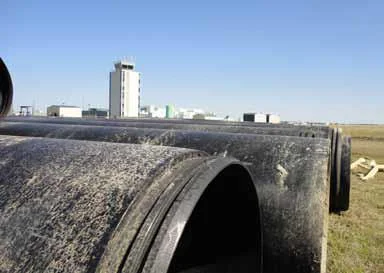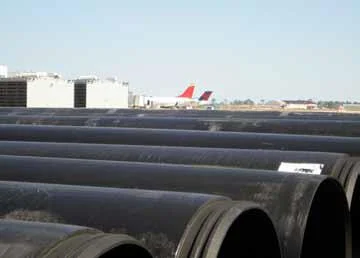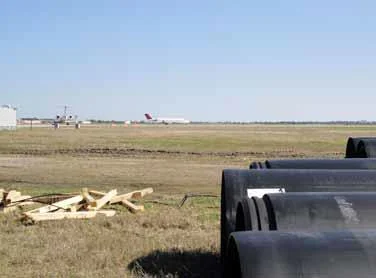Resources
Field Reports
Mississippi Airport Keeps Runways and Taxiways Open While Repairing Old Culverts Located Underneath



The Problem
The Gulfport-Biloxi International Airport in Gulfport, Mississippi was undertaking an airport improvement project that included repairing, repaving and adding new runways and taxiways. As part of this improvement project, the airport discovered several aging and deteriorating drainage culverts under the existing runways/taxiways. The old reinforced concrete pipe (RCP) culverts were starting to separate so the airport decided this was the best time to repair them since the improvement project was already ongoing. Initially, the airport decided to fix two RCP culverts. One culvert was 950 feet long and had a 54-inch diameter and the other measured 550 feet long with a 48-inch diameter.
The Solution
The airport decided to reline the 54-inch and 48-inch RCP culverts instead of replacing them. The engineering company on the project, Neel-Schaffer, Inc., gave the main contractor, Hosea O’Weaver & Sons, an option to use either the Snap-Tite® culvert lining system or “cured-in-place” pipe for the pipe repair. Snap-Tite pipe was more cost-effective and safe and easy to install.
The high-density polyethylene (HDPE) Snap-Tite pipe system has a patented male/female machining at each pipe section end. During installation, the machined sections are ‘snapped’ together, piece-by-piece, and pushed into the full length of an existing pipe. Any annular space and voids between the old culvert and new liner are filled in with grout. The pipe liner is available in lengths from two feet to 50 feet, and is available for culverts with diameters from eight inches to 84 inches. Snap-Tite® also meets American Association of State Highway and Transportation Officials (AASHTO) Standard M326 for rehabilitating culverts.
The airport, engineer and contractor worked with Ryan Harrington, Snap-Tite representative, to choose the right size and length of Snap-Tite pipe for this project. Snap-Tite supplied a 48-inch Snap-Tite pipe for the 54-inch RCP and a 42-inch Snap-Tite pipe for the 48-inch RCP. The Snap-Tite pipe arrived on site in 49-foot sections, ready for joining and installation.
The Installation
Hosea O’Weaver & Sons hired sub-contractor Cambridgemoen, LLC to handle the Snap-Tite culvert lining portion of the project, which was one part of the larger five-phase runway/taxiway improvement. A benefit of relining the culverts with Snap-Tite, as opposed to replacing them, is that resurfacing runways and taxiways takes place alongside the culvert rehab without any disruption to the surface of the runways and taxiways. The airport is still able to use the runways and taxiways for aircraft traffic while the relining takes place.
“The main benefit of Snap-Tite is that the integrity of the pipe can be restored without any impact to the existing airport pavement, hence not causing airfield closings, disruption to airport users or affecting air traffic,” said Susana Cook, Neel-Shaffer engineer. “No significant economic impact is caused to airport operations.”
The pipe relining phase of the project took less than a week to complete. For each of the culverts, the sub-contractor slid one of the Snap-Tite pipe sections inside the RCP and then snapped a second section to it using only come-a-longs and chains. This was done with each section until the pipe liner was fully in place inside the old RCP. Once the RCP was lined, the Cambridgemoen crew filled in any annular space between the RCP and Snap-Tite pipe with grout, grouting the pipes in place. Though the Snap-Tite pipe is a smaller diameter than the original RCP, the drainage flow is maintained due to Snap-Tite’s smooth wall interior. In many cases, Snap-Tite even improves the flow through the culvert.
Conclusion
The installation was a success and the airport plans to reline more culverts in the future using Snap-Tite pipe.
“The installation of Snap-Tite was without problems, and to date, the pipes have been functioning correctly,” added Cook. “Our current experience is that Snap-Tite is a good product, fast and easy to install, and can be used at airports without affecting air traffic. We are planning on using Snap-Tite in future drainage improvements for this airport, and for other airports with similar needs.”


